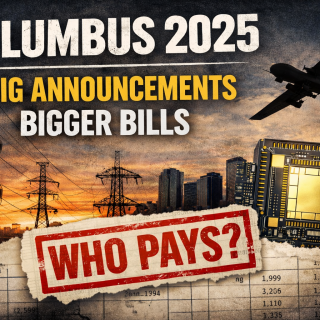Advertisement
Lots of BO from the OBBBA
When President Trump signed the One Big Beautiful Bill Act, or OBBBA, into law on July 4th, he essentially eliminated renewable energy subsidies for residential solar by the end of this year.
Corporate and utility scale solar projects must now be placed in service by the end of 2027. If they begin construction within 12 months of the signing of the bill, they have four years to complete construction and still qualify for the energy incentives.
The question of the moment is, what qualifies as beginning construction?
Developers have relied on what are called safe harbor rules to determine when construction begins. Under these rules, they have two options.
The 5 percent cost method is where the developer must spend at least 5 percent of the cost of the project. Typically, they do this by buying inverters or solar panels and then often these are placed in a warehouse until the actual construction can begin.
Another determination is the progress of the physical work test where developers initiate significant progress in the actual construction, such as excavation or foundation pouring or racking installation.
Last week, Trump directed the Treasury Department to issue new and revised rules or guidance within 45 days to redefine what the safe harbor rules will be.
It's expected that lawmakers who oppose the renewable energy industry will redefine what constitutes as beginning of construction to restrict those who might otherwise qualify for the incentives that are still remaining.
Summing up the administration's goal, Republican congressman from Texas, Chip Roy, noted,"We believe the administration is aligned with us on terminating those Green New Scam subsidies. We believe we're going to get 90-plus percent of all future projects terminated."
Climate Change Prompts HomeownersTo Prepare for an Uncertain Future
Homeowners are worried about grid reliability and overwhelming 91 percent of homeowners polled in California, Texas, and Florida worry about the impacts of extreme weather, rising energy costs, and grid instability.
The majority indicate that they are interested in power backup solutions and reducing grid reliance according to a new Horowitz research survey.
The majority also expressed dissatisfaction with current home power energy storage solutions from entrenched players.
Tesla Powerwall remains the most recognized name in battery backup, but nearly 24 percent of those familiar with the brand say that they would never consider using it.
The survey also found that 60 percent of respondents wish to become less dependent on grid power and 70 percent said that they are looking at getting an active power backup solution.
Renewables Will Still Be Competitive Without Subsidies
In 2024, approximately 28 percent of new residential solar installations included battery backup. According to Wood McKenzie, this is a significant increase over a year earlier where the rate was around 14 percent.
Despite the recent federal tax credit repeal, analysis from Lazard finds that solar and wind energy projects have a lower levelized cost of electricity or LCOE than nearly all fossil fuel projects, even without subsidies.
LCOE is a measure of cost-efficiency of generation sources across technology types.
The metric is based on lifetime cost divided by energy production and calculates the present value of the total cost of building and operating a power plant over its lifetime.
Lazard's analysis finds that unsubsidized LCOE for utility scale and onshore wind without tax credits range from about 3.8 cents per kilowatt hour to about 7.8 cents per kilowatt hour.
Utility scale solar with energy storage is higher, ranging from 5 cents to about 13 cents per kilowatt hour.
That's less than half the cost of a natural gas peaker plant or coal power plant and about one third the cost of electricity from nuclear power plants.
To emphasize this point, over the past year, solar generation has become the leading source of electricity surpassing natural gas in the state of California.
Data from the US Energy Administration or EIA shows that in the 12 months ending in April of this year, California generated 83.1 terawatt hours of electricity compared to 81.6 terawatt hours of electricity from natural gas.
During that period, solar accounted for 33.9 percent of the state's electricity and natural gas slightly less than 33.3 percent.
Natural gas accounts for pretty much all of the fossil fuels within that state where only about 0.1 percent of the state's electricity comes from coal power plants.



